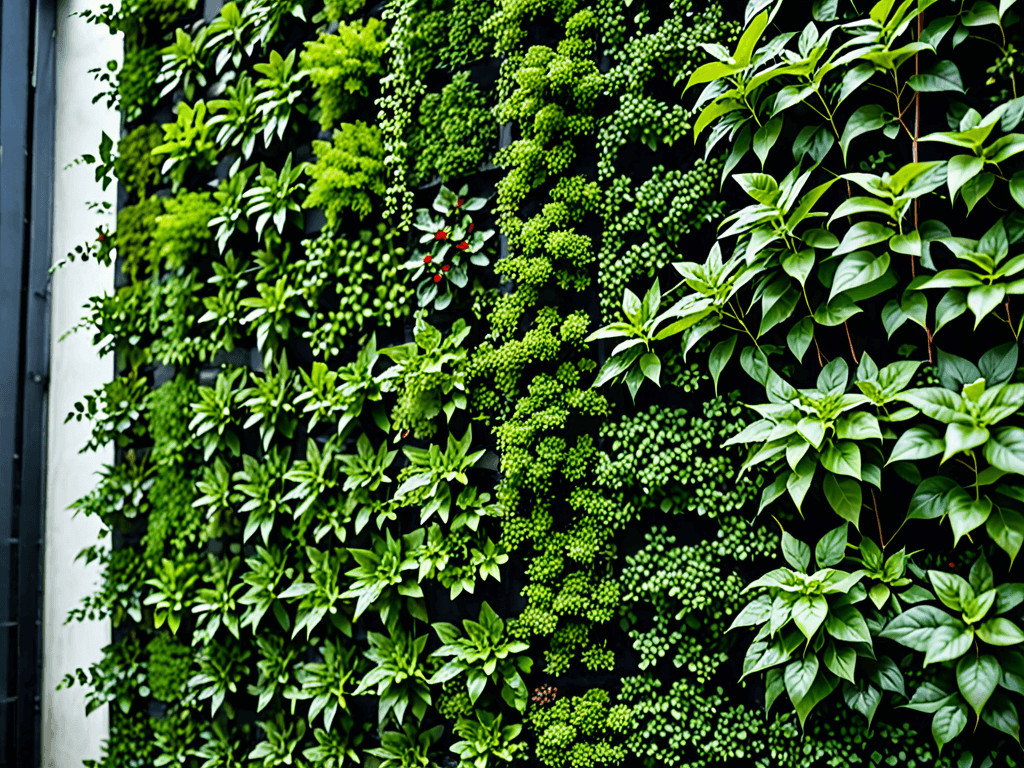Vertical gardening is revolutionizing how we integrate nature into our homes, especially in urban environments.
This innovative approach to gardening allows you to maximize space, enhance aesthetic appeal, and contribute to environmental benefits within confined areas.
Whether you are seeking to beautify a balcony or transform an entire wall, vertical gardening offers a plethora of possibilities.
Dive into our guide as we explore what vertical gardening entails, its advantages, and practical tips to start your own vertical garden journey.
What is Vertical Gardening?
Vertical gardening is a method of growing plants vertically rather than horizontally. This technique involves structures like walls or trellises to support plants as they grow upwards. Perfect for urban environments, vertical gardening maximizes limited space, making it possible to enjoy greenery without a traditional yard.
Many people use it to create living walls, which add beauty and natural insulation to any building. Not only does this practice provide environmental benefits by reducing the urban heat effect and improving air quality, but it also offers aesthetic appeal and potential for growing fresh produce at home.
From balconies to backyards, vertical gardens can be adapted to various spaces, allowing anyone, regardless of living area, to indulge in gardening.
Benefits of Vertical Gardens
Vertical gardens offer a myriad of benefits for both urban and rural settings. Space optimization is one of the most significant advantages, allowing gardeners to grow plants even in limited areas by utilizing vertical space.
They contribute to better air quality by increasing oxygen levels and reducing pollutants, which is particularly beneficial in densely populated urban areas.
Moreover, vertical gardens can provide natural insulation for buildings, helping to reduce energy costs by maintaining internal temperatures.
They also promote biodiversity by attracting a variety of pollinators and insects, aiding in ecological balance.
Additionally, these gardens can offer improved mental well-being, as the presence of plants has been shown to reduce stress levels and boost mood.
How to Start a Vertical Garden
Starting a vertical garden involves a few simple yet essential steps. Begin by assessing the space available. Identify walls or fences that receive adequate sunlight, as most plants require at least 6 hours of sun daily.
Next, decide on the type of support structure you need; options include trellises, pallets, or modular panels that can easily be attached to walls.
Choose plants based on your environment conditions and the available sunlight; herbs like basil and mint or compact vegetables like tomatoes or lettuce are excellent choices for beginners.
Soil quality is crucial. Opt for a well-draining mix to prevent root rot.
Watering is another key factor; consider setting up a drip irrigation system to ensure consistent moisture.
Finally, always monitor your garden for signs of pests or diseases, addressing issues promptly to maintain a healthy garden environment.
Essential Plants for Vertical Gardening
Choosing the right plants for your vertical garden can ensure a thriving green space. Herbs like basil, parsley, and cilantro are popular choices due to their fast-growing nature and compact size.
Succulents are excellent for vertical gardens since they require little water, making them ideal for drier spots.
If you’re aiming for a colorful display, consider trailing flowers like nasturtiums or petunias, which cascade beautifully.
For those interested in edible options, plants like cherry tomatoes, strawberries, and dwarf peppers offer fresh produce without needing much space.
Remember to check the light and water needs of each plant to ensure they match your garden’s conditions.
DIY Vertical Gardening Tips
Creating a DIY vertical garden can be a fun and rewarding project. Start by selecting a sturdy frame, such as an old wooden pallet or a series of stacked planters. This will serve as the backbone of your vertical garden. Ensure that your chosen structure is secured safely to a wall or ground to prevent tipping.
Soil mix is crucial; use a lightweight blend to lessen pressure on the supports. Incorporate materials like coconut coir or peat moss to improve moisture retention. For those interested in a more artistic approach, try arranging plants in a pattern with varying textures and colors to create a striking visual effect.
Recycled materials like cut plastic bottles or old shoe organizers can also be repurposed as innovative planters, making this embellishment not only eco-friendly but also budget-conscious.
Vertical Gardening in Small Spaces
Vertical gardening is perfect for small spaces, offering a smart use of limited areas.
By using vertical planes, like walls or fences, you can create a vibrant garden without needing much ground space. Hanging planters and wall-mounted containers are great tools to transform tiny spaces into lush green areas.
Consider using shelves or ladders to stack pots vertically, maximizing your planting potential.
Compact crops like lettuce, herbs, and strawberries thrive in these setups, providing fresh produce without needing a full garden.
With a little planning and creativity, even the smallest balcony or patio can become a thriving vertical garden.
Maintaining Your Vertical Garden
Proper maintenance is key to ensuring your vertical garden thrives. Regular watering is essential, as plants in vertical setups lose moisture quickly. Implementing a drip irrigation system can help keep the soil consistently moist.
Fertilization should be done periodically with a balanced liquid fertilizer to provide essential nutrients. Keep an eye out for pests and diseases that can affect plant health; natural remedies like neem oil can be effective for control.
Pruning is important to prevent overcrowding and promote healthy growth, especially in faster-growing species. Finally, inspect your structure regularly to ensure all components remain secure and stable, reducing the risk of damage to plants.
Common Mistakes in Vertical Gardening
Avoiding common mistakes in vertical gardening can lead to success and a lush garden. One significant mistake is overwatering your plants. Vertical setups can lead to water drainage issues, so it’s crucial to check that containers have proper drainage holes.
Another error is choosing the wrong plants; ensure that the plants selected are suitable for vertical growth and the available light conditions.
Inadequate support for growing plants can also lead to structural problems, so always ensure your frames are sturdy and well-secured.
Lastly, neglecting regular maintenance such as pruning and pest control can hinder your garden’s health. Paying attention to these aspects will keep your vertical garden thriving.
Embracing the Beauty of Vertical Gardening
Vertical gardening offers a unique solution for incorporating greenery into urban and limited spaces.
By maximizing vertical areas, this method allows for a lush display of plants while enhancing air quality and providing an aesthetic focal point.
To ensure successful vertical gardens, select the right plants, maintain proper soil conditions, and uphold consistent watering and maintenance routines.
With these practices, vertical gardening can transform even the smallest areas into vibrant green spaces.
Whether aiming to grow herbs, vegetables, or decorative plants, vertical gardening is a versatile and engaging approach to gardening.
Embrace this innovative gardening style to bring life and beauty to your environment.
FAQ – Frequently Asked Questions about Vertical Gardening
What is vertical gardening?
Vertical gardening is a technique of growing plants on vertical surfaces, using structures such as walls or panels.
What are the benefits of vertical gardens?
Vertical gardens maximize space usage, improve air quality, and add aesthetic value to urban environments.
How do I start a vertical garden?
Select a suitable structure, choose plants, ensure proper light and water conditions, and start planting vertically.
What plants are best for vertical gardening?
Herbs like basil, succulents, and trailing flowers like petunias are ideal for vertical gardens.
How do I maintain a vertical garden?
Regularly water, fertilize, and prune your plants, and ensure the stability of your garden structure.
What are common mistakes in vertical gardening?
Overwatering, choosing unsuitable plants, and inadequate support can hinder the success of a vertical garden.


